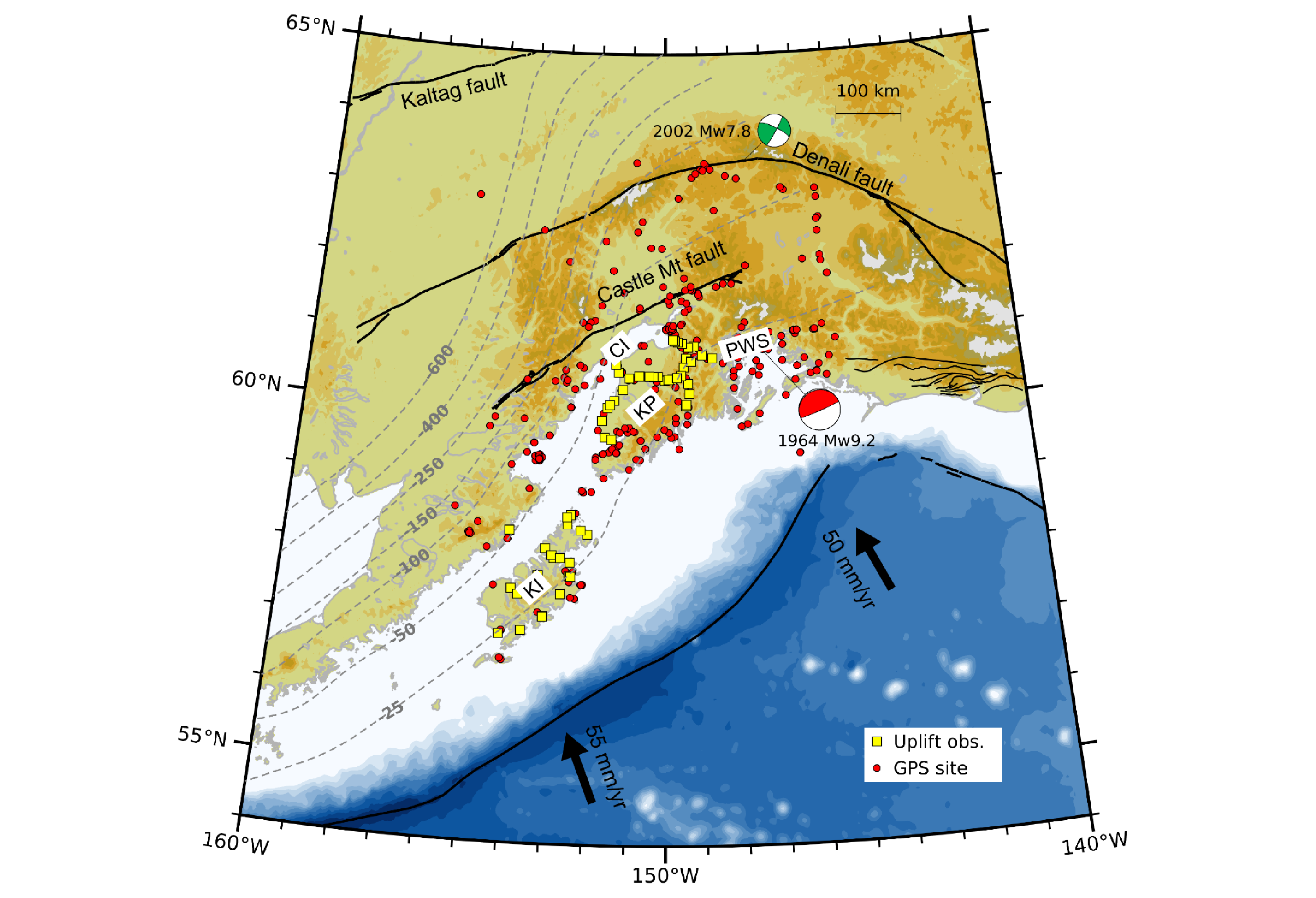


Understanding postseismic processes following the 2016 Mw 7.8 Kaikōura earthquake remains challenging due to the time‐dependent afterslip over the complex forearc system including crustal faults and megathrust, and the viscoelastic relaxation of the upper mantle. How the 2016 Mw 7.8 Kaikōura crustal earthquake interacts with the megathrust has yet to be better understood. Here we have derived the first 5‐year postseismic displacements from Global Positioning System (GPS) time series of 75 stations to study postseismic processes through a three‐dimensional viscoelastic finite element model. The optimal steady state viscosities of the crustal shear zone, megathrust sh
Read More
In this research, we estimate the contribution of poroelastic rebound (PE) to the 2010 Mw8.8 Maule and 2014 Mw8.1 Iquique earthquakes. The thickness and Poisson ratio of the poroelastic layer in the crust and slab are explored. The poroelastic effect is investigated through improving the fit to the postseismic residuals (GPS observations minus predictions by viscoelastic relaxation model of the earthquake). We also try to evaluate the time duration of PE in both regions. This comparative analysis may give insight into the fluid flow processes in the upper crust in the Andes Subduction Margin. Research Members: Segun Steven Bodunde, Dr. Yan Hu, Yixing Zhang, Zhiping Hu
Read More
Viscoelastic postseismic deformation after the 1964 Mw9.2 Alaska earthquake extends thousands of kilometers from the rupture region and lasts for decades, providing unique opportunities to better understand the three-dimensional rheological properties of the Alaska subduction zone. We have optimized a three-dimensional viscoelastic finite element model to study processes that control the postseismic deformation of the 1964 event. The model has determined the viscosities of the mantle wedge and shear zone to be 3 x 10^19 Pa s and 8 x 10^16 Pa s, respectively. The afterslip takes place mostly within the first 5 years after the earthquake and is up to 4 m, equivalent to a mo
Read MoreCopyright © Geodynamics Research Center,USTC/DSEL. All Rights Reserved.